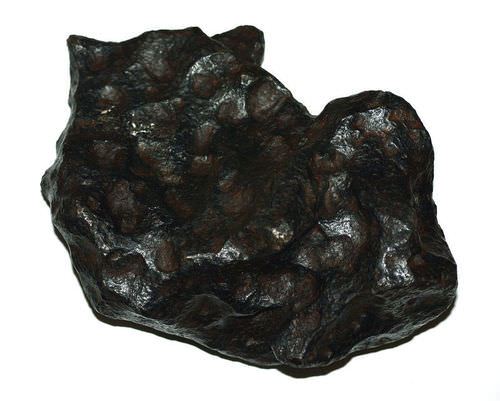READ: Earth's Layers
READ: Earth's Layers
If we could cut Earth open, we'd see the inner core at the center, then the outer core, the mantle in the middle and the crust on the outside. If you are talking about plates, though, there's the brittle lithosphere riding on the plastic asthenosphere. Whew! The layers scientists recognize are pictured below.
A cross section of Earth showing the following layers: (1) crust (2) mantle (3a) outer core (3b) inner core (4) lithosphere (5) asthenosphere (6) outer core (7) inner core.
- The crust is less than 1% of Earth by mass. The two types are oceanic crust and continental crust.
- The mantle is hot, ultramafic rock. It represents about 68% of Earth's mass.
- The core is mostly iron metal. The core makes up about 31% of the Earth.
- The lithosphere is composed of both the crust and the portion of the upper mantle and behaves as a brittle, rigid solid.
- The asthenosphere is partially molten upper mantle material and behaves plastically and can flow.
Earth's Crust
Earth’s outer surface is its crust, a cold, thin, brittle outer shell made of rock. The crust is very thin relative to the radius of the planet. There are two very different types of crust, each with its own distinctive physical and chemical properties, which are summarized below.
| Crust | Thickness | Density | Composition | Rock types |
|---|---|---|---|---|
| Oceanic | 5-12 km (3-8 mi) | 3.0 g/cm3 | Mafic | Basalt and gabbro |
| Continental | Avg. 35 km (22 mi) | 2.7 g/cm3 | Felsic | All types |
Oceanic Crust
Oceanic crust is composed of mafic magma that erupts on the seafloor to create basalt lava flows or cools deeper down to create the intrusive igneous rock gabbro (Figure below).
Gabbro from ocean crust. The gabbro is deformed because of intense faulting at the eruption site.
Sediments, primarily mud and the shells of tiny sea creatures, coat the seafloor. Sediment is thickest near the shore, where it comes off the continents in rivers and on wind currents.
The oceanic crust is relatively thin and lies above the mantle. The cross section of oceanic crust in the Figure below shows the layers that grade from sediments at the top to extrusive basalt lava, to the sheeted dikes that feed lava to the surface, to deeper intrusive gabbro, and finally to the mantle.
A cross-section of oceanic crust.
Continental Crust
Continental crust is made up of many different types of igneous, metamorphic, and sedimentary rocks. The average composition is granite, which is much less dense than the mafic rocks of the oceanic crust (Figure below). Because it is thick and has relatively low density, continental crust rises higher on the mantle than oceanic crust, which sinks into the mantle to form basins. When filled with water, these basins form the planet’s oceans.
This granite from Missouri is more than 1 billion years old.
Earth's Mantle
The two most important things about the mantle are: (1) it is made of solid rock, and (2) it is hot.
Solid Rock
Scientists know that the mantle is made of rock based on evidence from seismic waves, heat flow, and meteorites. The properties fit the ultramafic rock peridotite, which is made of the iron- and magnesium-rich silicate minerals (Figure below). Peridotite is rarely found at Earth's surface.
Peridotite is formed of crystals of olivine (green) and pyroxene (black).
Heat Flow
Scientists know that the mantle is extremely hot because of the heat flowing outward from it and because of its physical properties.
Heat flows in two different ways within the Earth:
- Conduction: Heat is transferred through rapid collisions of atoms, which can only happen if the material is solid. Heat flows from warmer to cooler places until all are the same temperature. The mantle is hot mostly because of heat conducted from the core.
- Convection: If a material is able to move, even if it moves very slowly, convection currents can form.
Convection in the mantle is the same as convection in a pot of water on a stove. Convection currents within Earth's mantle form as material near the core heats up. As the core heats the bottom layer of mantle material, particles move more rapidly, decreasing its density and causing it to rise. The rising material begins the convection current. When the warm material reaches the surface, it spreads horizontally. The material cools because it is no longer near the core. It eventually becomes cool and dense enough to sink back down into the mantle. At the bottom of the mantle, the material travels horizontally and is heated by the core. It reaches the location where warm mantle material rises, and the mantle convection cell is complete (Figure below).
Earth's Core
At the planet’s center lies a dense metallic core. Scientists know that the core is metal because:
- The density of Earth's surface layers is much less than the overall density of the planet, as calculated from the planet’s rotation. If the surface layers are less dense than average, then the interior must be denser than average. Calculations indicate that the core is about 85% iron metal with nickel metal making up much of the remaining 15%.
- Metallic meteorites are thought to be representative of the core. The 85% iron/15% nickel calculation above is also seen in metallic meteorites (Figure below).
An iron meteorite is the closest thing to the Earth’s core that we can hold in our hands.
If Earth's core were not metal, the planet would not have a magnetic field. Metals such as iron are magnetic, but rock, which makes up the mantle and crust, is not.
Scientists know that the outer core is liquid and the inner core is solid because:
- Earthquake waves do not go through the outer core.
- The strong magnetic field is caused by convection in the liquid outer core. Convection currents in the outer core are due to heat from the even hotter inner core.
The heat that keeps the outer core from solidifying is produced by the breakdown of radioactive elements in the inner core.
Summary
- By composition, Earth is divided into core, mantle, and crust.
- The crust and upper mantle are divided into lithosphere and asthenosphere.
- Continental crust is felsic, oceanic crust is mafic, the mantle is ultramafic, and the core is metallic.
- Oceanic crust is thinner and denser than continental crust.
- Oceanic crust is more mafic, continental crust is more felsic.
- Crust is very thin relative to Earth's radius.
- The mantle is composed of solid peridotite.
- Conduction from the core heats the lower mantle.
- Mantle convection cells bring hot material up toward the surface and cooler material down toward the core.
- Earth's core is dense metal.
- The inner core is solid and the outer core is liquid, as indicated by seismic waves.
- Metallic meteorites, density calculations, and the magnetic field are all clues that about the composition of Earth's inner and outer core.







